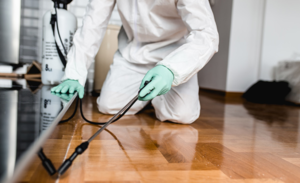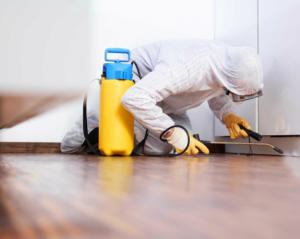Tree service professionals help you keep the flora around your home healthy and looking great. They can diagnose problems, such as fungus and insect infestations, and provide the right product solutions to treat the problem.
When selecting a tree service, get at least three estimates. Ask friends and family in the area about who they use, and check online reviews. Contact Innovation Tree Service of Irvine now!
Many homeowners need to have their trees removed because they are dying or have fallen over due to storm damage. This can be a dangerous task, and it is important to hire a company with experience. A professional tree service can help you save your home and property by removing the dead or damaged tree and trimming other trees on your property. The company will also cut down the stump and clean up the debris afterward.
A good tree service will also be able to help you prevent future disasters by conducting a safety inspection of your property. They will check for signs of disease or damage, such as bare branches, leaning or hanging limbs, and large cracks in the trunk. They will also examine the roots, girth, and crown of the tree for signs of insect infestation and structural damage.
Trees are important for the environment, but they can become a nuisance and even a danger to your house if they aren’t well maintained. It’s important to find a tree services company that provides quality work at an affordable price. The cost of a tree removal depends on the size, location, and condition of the tree.
A local tree service can help you keep your yard looking great and improve your property’s value. A few of the services they offer include trimming, pruning, stump grinding, and landscape design. They can also take care of your yard’s weeds and grass. They have a wide range of equipment and will do the job quickly and efficiently. If you have any questions, they can be reached by phone or email. They will also give you a free estimate.
Tree Pruning
Tree pruning services are a way for home owners to maintain their property’s aesthetics and prevent hazards. These services include removing diseased or damaged branches, improving air flow around the canopy, and trimming the overall shape of the tree. Regular pruning can also help trees live longer and be more resistant to weather damage and pests.
A trained professional can prune a tree in a way that promotes health and longevity. By pruning a tree correctly, it can be stimulated to grow stronger and healthier branches that can support a heavier weight. In addition, a professional can remove dead or dying branches before they fall and cause damage to your property.
The type of pruning a tree requires depends on its species and location. A trained arborist can evaluate your property and recommend the best service for each situation. Some common pruning methods include crown thinning and dead pruning. These methods can improve a tree’s health by opening up the canopy and allowing more sunlight to reach the grass or other landscaping on your property.
A well-maintained landscape with well-shaped trees boosts curb appeal and can increase your home’s value. Trees that are properly trimmed can reduce the risk of falling branches during storms, which could damage buildings or power lines. Additionally, regular pruning can keep trees from encroaching on structures or obstructing views.
While a tree’s age and location are important factors in how it can withstand severe weather conditions, the most significant factor is its level of health. This is why routine pruning is so important. When done correctly, it can promote strong growth, reduce the potential of dangerous debris falling during a storm, and provide your yard with more natural sunlight.
Tree Stump Removal
Stump removal is an essential service offered by tree services. They help homeowners get rid of tripping hazards and eyesores that are left behind after a tree is cut down. This is a difficult job that can be dangerous and should be performed by qualified professionals. Stump removal can also be expensive depending on the type of stump and where it is located.
To remove a stump, the experts will first have to dig up the roots. This is a time-consuming task that can be difficult if the stump is surrounded by hard soil. This is because the soil can jam the blades of the stump grinder. In addition, the root system may be very thick and hard to break up.
Once the professionals are done digging up the stump, they will use a machine to grind it down. This will take up to a week to completely grind it down, leaving only a small portion of the stump. The professionals will then use mulch or dirt to cover the stump and make it less of an eyesore in your yard.
Other services that tree companies offer include removing debris and cutting up the remaining wood for firewood. These tasks are usually charged separately and can be added to your estimate. You should expect to pay more for a tree removal when it is a large tree or located near power lines or buildings. You should also factor in extra services like stump grinding and limb chipping. These tasks are not included in the basic estimate and require additional time and labor to complete. These extra services are worth the investment in the long run and will save you from more costly issues in the future.
Tree Health Care
Whether you have a home or business, a yard full of healthy trees and shrubs enhances your curb appeal. It also increases your property value and protects the environment. However, a yard full of trees and shrubs requires proper maintenance to stay healthy. A qualified arborist can provide you with expert tree services. A dependable service will evaluate your tree health and recommend specific solutions like pruning, trimming, and stump grinding.
During an ISA Certified Arborist inspection, an arborist will assess your yard and identify potential problems. These include discolored leaves, wilting or dying plants, insect infestations, and structural failures. In addition, the arborist can help you choose an appropriate treatment to control pests and disease organisms. Moreover, an arborist can examine the root systems of your trees to look for any signs of girdling roots that choke off water and nutrients.
A reputable tree service will offer competitive pricing for its expertise. It will also work closely with you to understand your needs and address any concerns that you might have. Lastly, it will strive to exceed your expectations by providing excellent customer service.
Bartlett Tree Experts is a company that offers tree service for both residential and commercial properties. It specializes in pruning and trimming services for trees of all sizes. It also offers a variety of other tree services, such as removing trees and stump grinding. The company has over 100 locations in the U.S. and Canada, and its employees are trained to follow the latest industry standards in safety and maintenance. Additionally, the company aims to improve the appearance and value of its clients’ landscapes. You can contact them to request a quote.
Tree Inspection
A healthy, well-maintained tree adds significant value to a home or commercial property. In addition, a well-placed and properly pruned tree will reduce energy bills during the winter by acting as a wind break, keeping your home warm. A regular inspection by a trained professional is vital to ensuring that your trees are healthy and able to contribute to the beauty of your property.
A tree inspection identifies any structural damage or issues that could potentially affect the health of the tree and can help prevent future costly repairs. For example, physical damage that goes unnoticed by homeowners such as root rot, poor soil conditions, or other problems can make the tree susceptible to disease and pests. A regular inspection allows you to identify and treat these problems before they spread to other trees on your property.
Tree inspections also help you understand what kind of care is needed for your specific type of tree. For instance, some trees require regular watering to maintain proper moisture levels in the soil. A specialist will be able to recommend an appropriate watering regimen that will keep your trees healthy and help them stand the test of time.
A professional tree inspection can save you the cost of major structural damage to your house, buildings, and other property structures. It can also protect you from liability in the event that a diseased or damaged tree falls and damages property or, even worse, causes injury to people. An experienced tree service professional will look for signs of poor soil conditions, fungus, insect infestations, nutrient deficiencies, and other health-related problems that may be lurking in your tree. By catching these issues early through regular inspections, you can save the tree and other plants on your property from irreversible damage.








